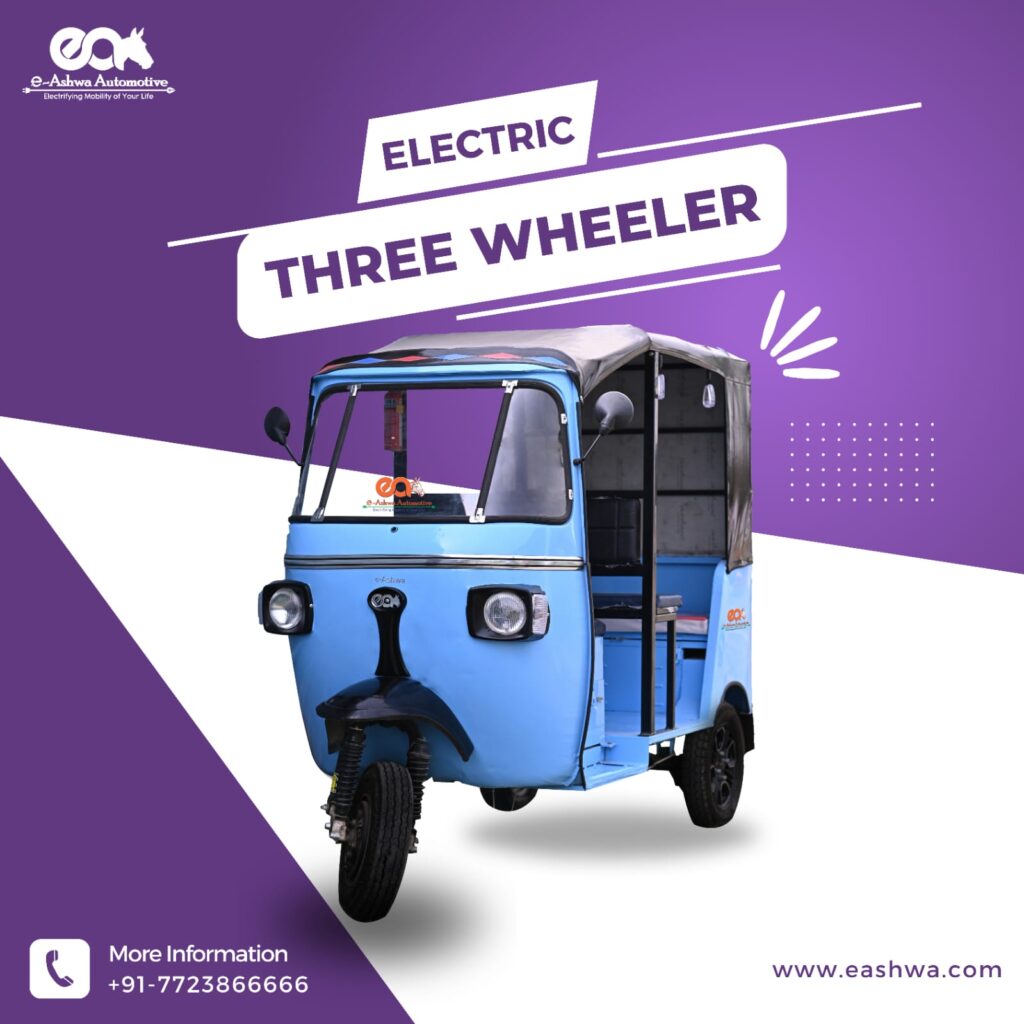The Rise of E-Rickshaws: Transforming Urban Transportation
Introduction: In the rapidly evolving landscape of urban transportation, electric vehicles (EVs) are gaining significant traction. Among these, electric autos, or e-autos, are emerging as a frontrunner in providing sustainable, efficient, and cost-effective mobility solutions. In this blog post, we explore why e-autos are at the forefront of transforming urban transportation and how they contribute to a cleaner, greener future.
The Rise of E-Autos
E-autos are electric versions of traditional auto-rickshaws, equipped with electric motors and batteries instead of internal combustion engines. Their popularity is growing in cities worldwide, particularly in developing countries where they offer a practical and environmentally friendly alternative to petrol or diesel-powered vehicles.
1. Environmental Benefits
- Zero Emissions: E-autos produce no tailpipe emissions, significantly reducing air pollution in urban areas. This is crucial for improving air quality and reducing the health risks associated with vehicular emissions.
- Reduced Carbon Footprint: By using electricity, especially from renewable sources, e-autos contribute to lowering the overall carbon footprint of urban transportation.
2. Economic Advantages
- Lower Operating Costs: E-autos have lower operating costs compared to traditional autos due to cheaper electricity and reduced maintenance needs. This makes them an attractive option for drivers and operators looking to maximize their earnings.
- Government Incentives: Many governments offer subsidies, tax benefits, and other incentives for purchasing and operating e-autos, making them even more affordable and appealing.
3. Technological Innovations
- Advanced Battery Technology: E-autos are benefiting from advancements in battery technology, including longer-lasting lithium-ion batteries and faster charging solutions. This enhances their range and usability in urban settings.
- Smart Connectivity: Modern e-autos are equipped with smart features such as GPS navigation, real-time monitoring, and app-based booking and payment systems, providing a seamless experience for both drivers and passengers.
4. Transforming Urban Mobility
E-autos are not just a cleaner alternative; they are reshaping the way people move around cities. Here are some key ways they are transforming urban mobility:
First and Last Mile Connectivity E-autos provide an efficient solution for first and last mile connectivity, bridging the gap between major transit hubs and final destinations. This is particularly important in densely populated urban areas where public transportation might not reach every corner.
Affordable and Accessible Transportation With lower fares compared to traditional taxis and ride-hailing services, e-autos offer an affordable transportation option for a wide range of urban residents. Their accessibility ensures that even low-income groups have reliable transportation.
Reducing Traffic Congestion E-autos are compact and can navigate through congested city streets more easily than larger vehicles. This flexibility helps reduce overall traffic congestion, making urban commutes quicker and more efficient.
5. Social and Cultural Impact
Beyond their practical benefits, e-autos are making a significant social and cultural impact:
Job Creation and Economic Empowerment E-autos create job opportunities for drivers, mechanics, and support staff, contributing to local economies. They also empower individuals by enabling them to own and operate their vehicles, fostering entrepreneurship.
Enhancing Community Life E-autos often become a familiar and integral part of community life, serving as a common mode of transportation for daily commutes, school runs, and shopping trips. They enhance social connectivity by providing a shared space for passengers to interact.
The Road Ahead: Innovations on the Horizon
The future of e-autos is bright, with several exciting innovations on the horizon:
Autonomous Driving Research and development in autonomous driving technology could soon lead to self-driving e-autos, further improving safety and efficiency in urban transportation.
Solar-Powered E-Autos Integrating solar panels on e-autos could provide an additional source of power, reducing reliance on grid electricity and enhancing sustainability.
Enhanced Battery Solutions Continued advancements in battery technology, such as solid-state batteries, promise longer ranges, quicker charging times, and improved overall performance for e-autos.
Conclusion
E-autos are leading the charge in the evolution of urban transportation, offering a cleaner, more efficient, and cost-effective alternative to traditional vehicles. As they continue to gain popularity and technological advancements, e-autos will play an increasingly vital role in shaping sustainable, livable cities of the future. Embracing this transformation not only benefits the environment but also enhances the quality of life for urban residents, making e-autos a pivotal component of modern urban mobility.



